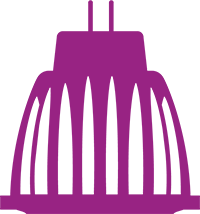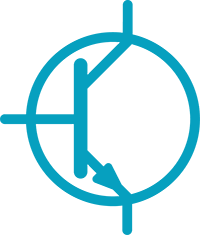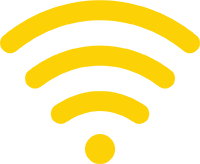Task G workshop: New motor technology
NULL — !map:HashWithIndifferentAccess full_width_image_alt: “” latitude: “” content_width_image_alt: “” show_event_location: “1” contact_email: “” annex: electric-motor-systems category: Presentation email: “” contact_tel: “” full_width_image: “” manchet: Zurich, Switzerland tel: “” contact_postal-code: “” image_link: “” street-address: “” locality: Zurich,
Task C workshop: Testing Centres
NULL — !map:HashWithIndifferentAccess full_width_image_alt: “” latitude: “” content_width_image_alt: “” show_event_location: “1” contact_email: “” annex: electric-motor-systems category: Presentation email: “” contact_tel: “” full_width_image: “” manchet: Zurich, Switzerland tel: “” contact_postal-code: “” image_link: “” street-address: “” locality: Zurich,
Sustainable Buildings Workshop
The IEA will be hosting this workshop on November 12 – 13, 2014 at their offices in Paris. A major focus of the workshop will be dedicated to their buildings analytical methodology, data sources, model input
Support for CDA Principles
ITI, Danish Energy Agency, Korean Energy Agency and ACEEE announce support for CDA Voluntary Principles for Energy Efficient Connected Devices
Summary of activities and outcomes of 4E Standby Power Annex – April 2014
Standby Power Annex summary of activities and outcomes – final report
Strategies In Light – Europe
NULL — !map:HashWithIndifferentAccess show_event_location: “1” longitude: “” show_contact_information: “” contact_organisation_url: “” contact_postal-code: “” contact_locality: “” contact_tel: “” image_link: “” full_width_image_bgcolor: “” organisation: “” content_width_image_alt: “” postal-code: “” annex: solid-state-lighting email: “” full_width_image: “” category: Workshop organisation_url:
Staying Connected: Unravelling Energy Waste Issues In Network Standby
Electronic products are an integral part of modern life. There has been great advancement in the capability and functionality of such products with network connectivity between electronic products rapidly becoming readily available.
Standby Power and Low Energy Networks – issues and directions
This study examines the issue of networked products and identifies key areas where energy saving strategies can be implemented. A critical component is power management across all modes – shutting down unnecessary capacity or functions when
Standby of Smart Lamps – Second Report
Report Overview Smart lamps and luminaires are common in today’s lighting market. Smart lighting provides an opportunity for the consumer to benefit from wireless control of lighting products, e.g. by dimming, colour tuning and scheduling. These
Standby of Smart Lamps – First Report
Report Overview Smart lamps are an exciting new family of products which provide an opportunity for the consumer to benefit from smart services, better product quality and energy savings. Combining wireless communication, intelligent controls and light
Standby Consumption Measurements
This document summarises the standby and networked standby measurements of the following products and concludes the compliance with ecodesign requirements: Standby consumption of 31 TVs, 14 audio equipment, 5 printers, 9 complex set top boxes
Standardisation for Smart Devices
This report highlights the most relevant standards in areas such as measurement of energy consumption of smart devices, and communication protocols for smart devices.
SSL Management Committee – Sep
NULL — !map:HashWithIndifferentAccess show_event_location: “” longitude: “” show_contact_information: “” contact_organisation_url: “” contact_postal-code: “” contact_locality: “” contact_tel: “” image_link: “” full_width_image_bgcolor: “” organisation: “” content_width_image_alt: “” postal-code: “” annex: solid-state-lighting email: “” full_width_image: “” category: Meeting organisation_url:
SSL Management Committee – October
NULL — !map:HashWithIndifferentAccess show_contact_information: “” category: Meeting locality: “” tel: “” contact_tel: “” image_link: “” contact_locality: “” full_width_image_alt: “” manchet: Teleconference email: “” latitude: “” longitude: “” content_width_image_alt: “” organisation_url: “” full_width_image_bgcolor: “” organisation: “” street-address:
SSL Management Committee – Nov
NULL — !map:HashWithIndifferentAccess show_event_location: “” longitude: “” show_contact_information: “” contact_organisation_url: “” contact_postal-code: “” contact_locality: “” contact_tel: “” image_link: “” full_width_image_bgcolor: “” organisation: “” content_width_image_alt: “” postal-code: “” annex: solid-state-lighting email: “” full_width_image: “” category: Meeting organisation_url:
SSL Management Committee – May
NULL — !map:HashWithIndifferentAccess show_contact_information: “” category: Meeting locality: “” tel: “” contact_tel: “” image_link: “” contact_locality: “” full_width_image_alt: “” manchet: Teleconference email: “” latitude: “” longitude: “” content_width_image_alt: “” organisation_url: “” full_width_image_bgcolor: “” organisation: “” street-address:
SSL Management Committee – May
NULL — !map:HashWithIndifferentAccess show_event_location: “” longitude: “” show_contact_information: “” contact_organisation_url: “” contact_postal-code: “” contact_locality: “” contact_tel: “” image_link: “” full_width_image_bgcolor: “” organisation: “” content_width_image_alt: “” postal-code: “” annex: solid-state-lighting email: “” full_width_image: “” category: Meeting organisation_url:
SSL Management Committee – June
NULL — !map:HashWithIndifferentAccess show_contact_information: “” category: Meeting locality: “” tel: “” contact_tel: “” image_link: “” contact_locality: “” full_width_image_alt: “” manchet: Teleconference email: “” latitude: “” longitude: “” content_width_image_alt: “” organisation_url: “” full_width_image_bgcolor: “” organisation: “” street-address:
SSL Management Committee – Jul
NULL — !map:HashWithIndifferentAccess show_event_location: “” longitude: “” show_contact_information: “” contact_organisation_url: “” contact_postal-code: “” contact_locality: “” contact_tel: “” image_link: “” full_width_image_bgcolor: “” organisation: “” content_width_image_alt: “” postal-code: “” annex: solid-state-lighting email: “” full_width_image: “” category: Meeting organisation_url:
SSL Management Committee – January
NULL — !map:HashWithIndifferentAccess show_contact_information: “” category: Meeting locality: “” tel: “” contact_tel: “” image_link: “” contact_locality: “” full_width_image_alt: “” manchet: Teleconference email: “” latitude: “” longitude: “” content_width_image_alt: “” organisation_url: “” full_width_image_bgcolor: “” organisation: “” street-address:




































